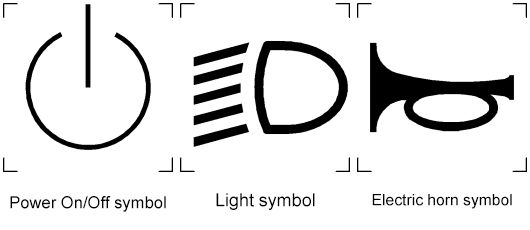EN 17128:2020 PLEV (Personal Light Electric Vehicle)
EN 17128:2020 was prepared by Technical Committee CEN/TC 354, the secretariat of this document is held and drafted by French Standards Committee (AFNOR). The standard was released on October 21, 2020 and will be implemented on April 30, 2021.
According to the CEN-CENELEC Internal Regulations, the national standards organizations of the following countries are bound to implement this European Standard: Austria, Belgium, Bulgaria, Croatia, Cyprus, Czech Republic, Denmark, Estonia, Finland, France, Germany, Greece, Hungary, Iceland, Ireland, Italy, Latvia, Lithuania, Luxembourg, Malta, Netherlands, Norway, Poland, Portugal, Republic of North Macedonia, Romania, Serbia, Slovakia, Slovenia, Spain, Sweden, Switzerland, Turkey and the United Kingdom.
This standard applies to personal light electric vehicles totally or partially electrically powered from self-contained power sources with or without self-balancing system, with exception of vehicles intended for hire from unattended station. This self-contained power sources have battery voltages up to 100 VDC, with or without an integrated battery charger with up to a 240 VAC input. This standard also specifies safety requirements, test methods, marking and information relating to personal light electric vehicles to reduce the risk of injuries to both third parties and the user during intended use, i.e., when used as intended and under conditions of misuse that are reasonably foreseeable by the manufacturer.
PLEV (personal light electric vehicle) is wheeled vehicle partially or totally motorized used for the transportation of one person in a public and/or private space, containing Self-balancing vehicle category, which is inherently instable vehicle that dynamically stabilizes in at least one direction (pitch) itself using a control system PLEV can be stable without the action of the user or a control system can provide a self-balancing function. Self-balancing PLEV can oscillate slightly in order to maintain its balance. User controls its direction and speed by shifting his center of gravity, without using any traditional device such as handle, steering, brake pedal, etc.
Classes of vehicle
| Classes | With self-balanced system | Maximum design speed (km/h) | Seating position |
| Class 1 | No | Up to 6 km/h | No |
| Class 2 | No | Up to 25 km/h | No |
| Class 3 | Yes | Up to 6 km/h | with or without |
| Class 4 | Yes | Up to 25 km/h | with or without |
Light, warning device, on-off symbols have been regulated in the standard

Components Tests
| Components | Testing Standards |
| Battery | EN 62133-1 & EN 62133-2 |
| Battery Charger | EN IEC 62485 series and EN 60204-1 or EN 60335?2?29, EN 61558-1 & EN 61558-2-16 (or BS EN IEC 62368?1) |
| Front and rear lightning | ISO 6742-1 |
| Retro-reflectors | ISO 6742-2 |
| Audible/ vibrating signaling | ISO 14878 Class II. |
Risk on PLEV
| Element or source of hazards | Circumstances for occurrence of the risk | Clause covering the risk | ||
| Electrical hazards | ||||
| Battery | Electrocution, fire outbreak or intoxication due to breakage of the battery during normal use | Clause 10 | ||
| Electrocution, outbreak of fire or intoxication due to Clause 10 a short circuit or sealing defect of the battery during normal use | ||||
| Cabled assembly | Electrocution or loss of a safety function following failure of the wiring | Clause 6.3 | ||
| Safety management by the power assistance management system | Accident due to loss or failure of the power assistance management safety systems | Clause 7 | ||
| Power assistance management | Failure of the power assistance and its safety management due to electromagnetic interference. | Clause 7 | ||
| Start of failure of neighboring systems due to electromagnetic interference emissions | ||||
| Mechanical hazards | ||||
| Handlebar and head tube | Fall due to the breakage of an element of the assembly | Clause 12.2.2 | ||
| Fall due to sudden loss of ergonomic adjustments during use | ||||
| Folding/unfolding systems | Fall due to unintentional folding (/unfolding), during use | Clause 14.3 | ||
| Deck | Fall due to breakage of the deck | Clause 12.2.1 | ||
| Wheel + front fork | Fall due to failure of one or more wheels | Clause 15.3 | ||
| Braking system | Accident due to failure or inadequacy of the braking system | Clause 15.4.2 | ||
| General assembly | Cut or pinching of a finger due to unsafe design or production | Clause 14 | ||
| Fall due to breakage or unintentional separation of mechanical elements | Clause 12.3, Clause 12.4 | |||
Intertek Hardlines Bicycle Laboratory
Founded in 1989, Intertek Hardlines Bicycle Laboratory is specialized in providing the finished bicycle and accessories testing service as a professional third-party agency. By virtue of the experienced technical team, the laboratory is capable of testing and certification according to the global standards and testing regulations prevailing in China, Europe, America, Australia, New Zealand and Japan, and will help you win market shares.
Intertek Electrically Power Assisted Cycles/Technical Consultation:
Tel: +86(21)5339 6231
Email: tingting.li@intertek.com
Tel: +86 0755-2602 8288
Email: Andy.fu@intertek.com
